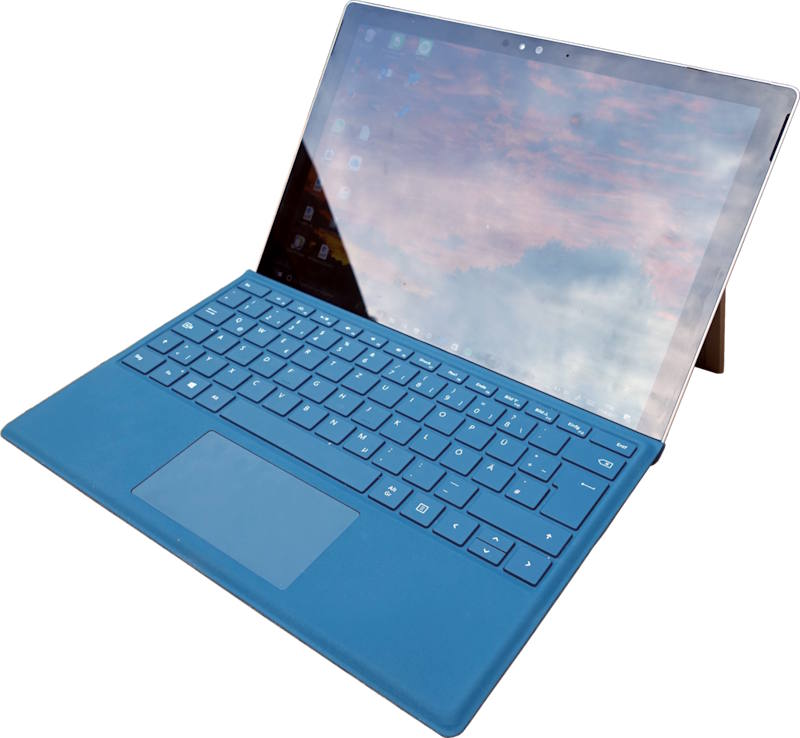The Microsoft Surface Pro 4 was released in October 2015, bringing several improvements over its predecessor, the Surface Pro 3. With a refined design, better performance, and the introduction of Windows 10, it aimed to solidify Microsoft’s position in the 2-in-1 laptop market. But was it truly a game-changer, or did it suffer from critical flaws? Let’s dive into the details.
Evolution from Surface Pro 3
The Surface Pro 3, launched in 2014, was a major step forward for Microsoft, pushing the idea of a tablet that could replace a laptop. While it introduced a larger 12-inch display and an improved kickstand, it had its share of shortcomings, including performance throttling and an aging design. The Surface Pro 4 built upon this foundation with key refinements.
Key Features and Improvements

Bigger, Sharper Display
- The Surface Pro 4 featured a 12.3-inch PixelSense display with a resolution of 2736 x 1824 pixels, offering a significant improvement in sharpness and color accuracy.
- Despite the larger screen, the overall device size remained almost the same due to thinner bezels.
More Powerful Performance
- Equipped with Intel’s 6th-generation Skylake processors (Core m3, Core i5, and Core i7 variants), the Surface Pro 4 offered better efficiency and processing power than the previous generation.
- RAM options ranged from 4GB to 16GB, making it suitable for both casual users and professionals needing extra power.
Enhanced Surface Pen
- Microsoft upgraded the Surface Pen with 1,024 levels of pressure sensitivity, providing a more natural writing experience.
- The Pen now had an eraser function and magnetically attached to the side of the Surface Pro 4.
Improved Type Cover and Trackpad
- The Type Cover was redesigned with a better keyboard layout and larger, more responsive keys.
- The trackpad was 40% larger than its predecessor, improving usability and precision.
Windows Hello and Better Security
- The addition of an infrared camera enabled Windows Hello facial recognition, allowing users to log in without typing passwords.
- TPM (Trusted Platform Module) was included for enterprise-level security.
Upgraded Cooling and Performance Efficiency
- Microsoft improved the thermal design to reduce overheating issues that plagued the Surface Pro 3.
- The Core m3 version was fanless, making it completely silent.
Issues and Drawbacks
While the Surface Pro 4 was an ambitious upgrade, it wasn’t without problems:
Screen Flickering Issues
- Some users experienced a persistent screen flickering problem, later dubbed “Flickergate.”
- Microsoft eventually offered free replacements for affected units in 2018.
Battery Life Concerns
- Despite improved efficiency, battery life was inconsistent and didn’t always meet Microsoft’s claims of 9 hours.
- Users reported real-world usage closer to 5-7 hours, especially under heavy workloads.
Windows 10 Software Bugs
- Windows 10 was still relatively new in 2015, leading to frequent driver issues and software instability.
- Sleep mode problems caused the Surface Pro 4 to wake up unexpectedly, draining the battery.
Price and Accessories Cost
- The base model started at $899, but adding the Type Cover ($130) and Surface Pen ($60) increased the total cost significantly.
- Competing ultrabooks offered similar specs at a lower price.
Reception and Legacy
Despite its issues, the Surface Pro 4 was well-received and set a new standard for hybrid devices. Reviewers praised its display, performance, and portability, making it one of the best 2-in-1 laptops of its time. However, reliability concerns and pricing made some users hesitant.
Microsoft learned from these challenges and addressed many of them in the Surface Pro 5 and later models. The Surface Pro 4 remains an important milestone in the evolution of the Surface lineup, pushing the boundaries of what a Windows tablet could achieve.
Conclusion
The Microsoft Surface Pro 4 was an innovative device in 2015, bringing major improvements over its predecessor while facing some early adoption challenges. It helped pave the way for future Surface models and reinforced Microsoft’s commitment to the 2-in-1 market. While its problems may have frustrated some users, it remains a significant step in the history of Windows-powered hybrid devices.